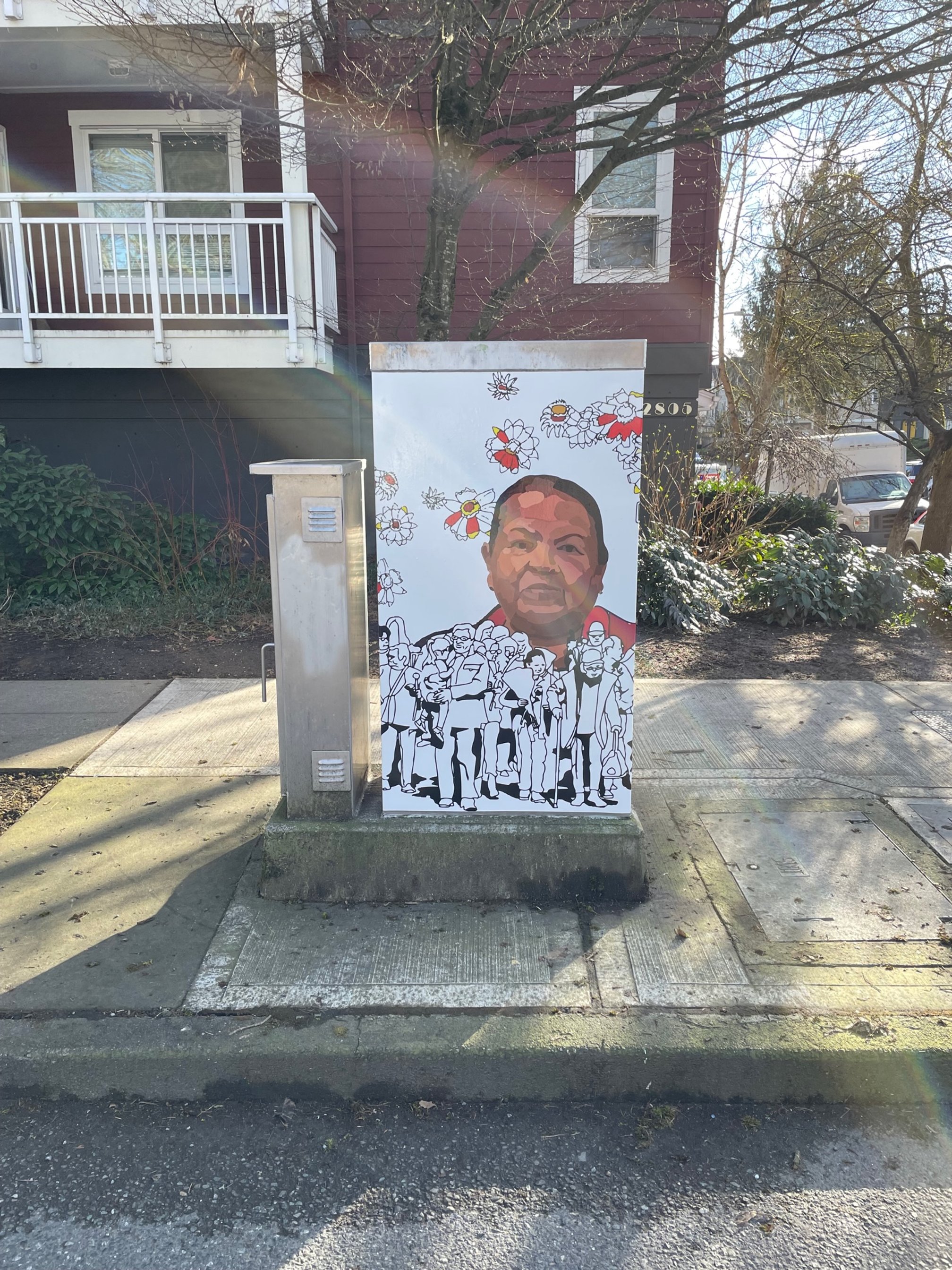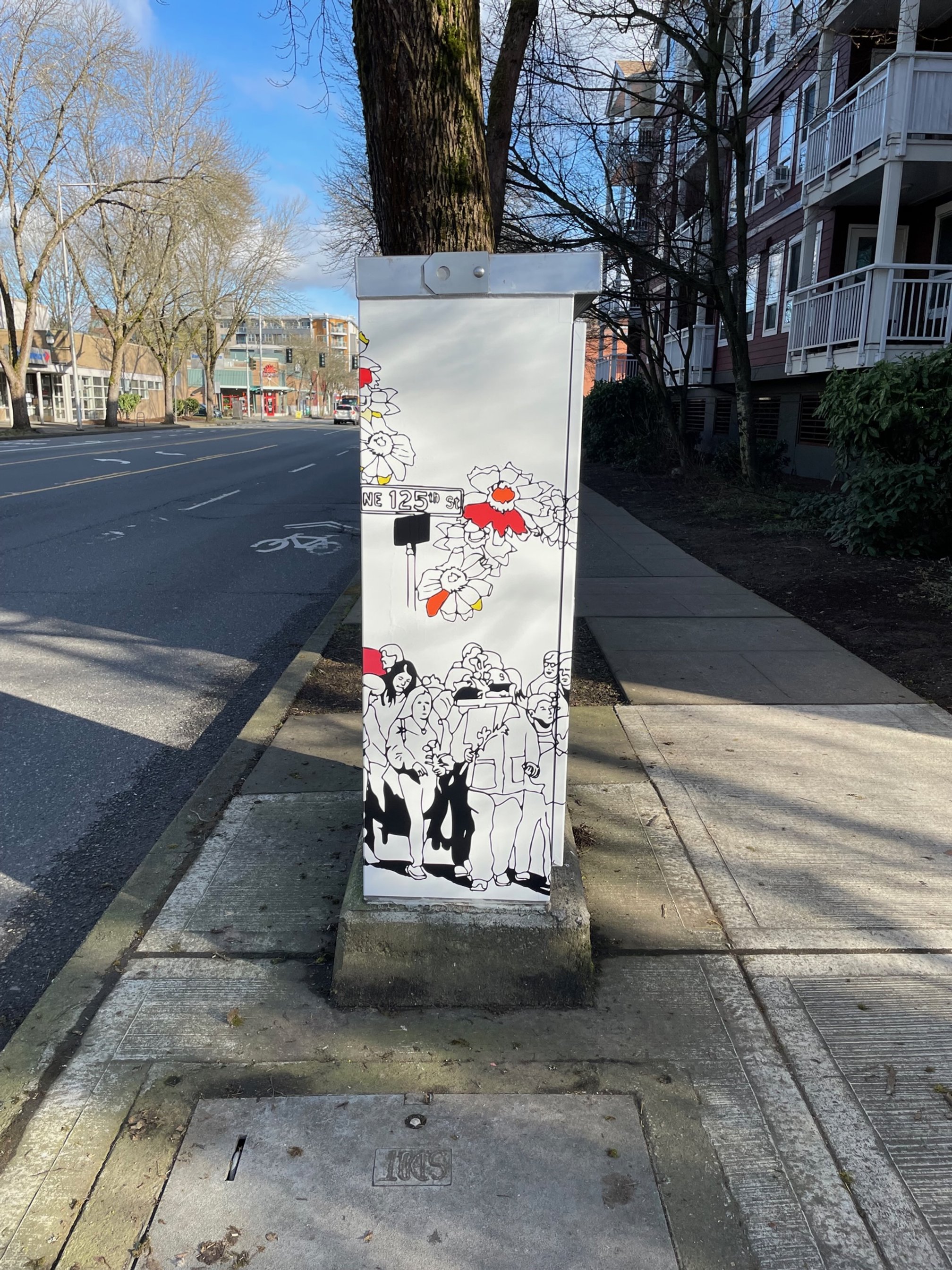








NE 125th St, Lake City, 2024
The inspiration for this art project is to memorialize a beloved member of the Lake City Senior Center, Maria Banda, whom a hit-and-run driver killed in 2019. Her passing hastened the installation of a crosswalk and pedestrian traffic signal proposed by the community to improve pedestrian safety. The art depicts Maria providing a safe passage for future pedestrians across NE 125th Street. In Maria’s Mexican culture, marigold flowers symbolize “grief” traditionally displayed during religious ceremonies and Día de los Muertos.

The project was funded by The Raynier Foundation and the Rotary Club of Seattle NE. Thank you for your generous support in bringing awareness to pedestrian safety.

Semi-Permanent Street Art, 2021
The Slurp! street mural project by Akira Ohiso, with technical assistance from muralist Angelina Villalobos, is inspired by noodles, stepping stones, the immigrant journey, and the diversity of intersecting cultures inhabiting the Chinatown-International District today. Each noodle cluster alludes to geographic locations, the circuitous route of immigration, and safe passage through the space. Landing on each cluster promotes this journey. Viewers are invited to appreciate the diversity of the neighborhood through vibrant colors, movement, and a memorable experience.

Public Sculpture, 2019
Akira Ohiso created 25 of his popular Fish Kites as a double art installation for the final goodbye celebration of the Alaskan Way Viaduct SR-99 before it is removed. The multi-day celebration included a run, bike ride and walk celebrating the end of its Seattle history. Akira was selected, along with other Seattle artists, to create a unique installation for this event. The 25 kites featured 8 images of Elliot Bay marine life.

Public Sculpture, 2018
Akira Ohiso’s art installation brings attention to the history of the river as a fertile fishery for the Duwamish Native tribe. The shallow banks of Longfellow Creek once supported smelt, but they slowly disappeared with the Industrial Revolution and the subsequent proliferation of chemicals and toxic waste. Ohiso created drawings of native smelt – in red, yellow, black, and blue – that were then digitally printed onto white windsocks to create fish kites. In the artist’s Japanese culture, fish kites (Koinobori) are flown on poles to celebrate an annual national Children’s Day – symbolizing hope for a healthy and prosperous future for children. This year also marks the 75th anniversary of the Japanese-American internment camps, adding poignancy to the installation.
